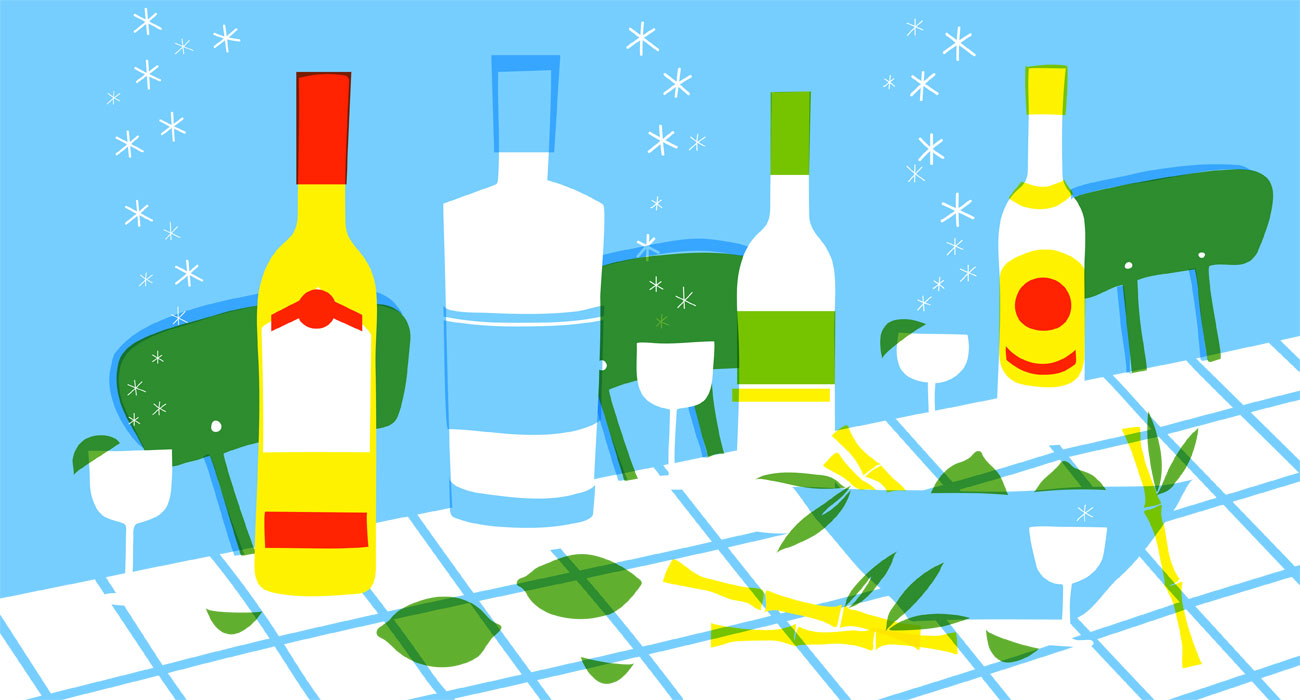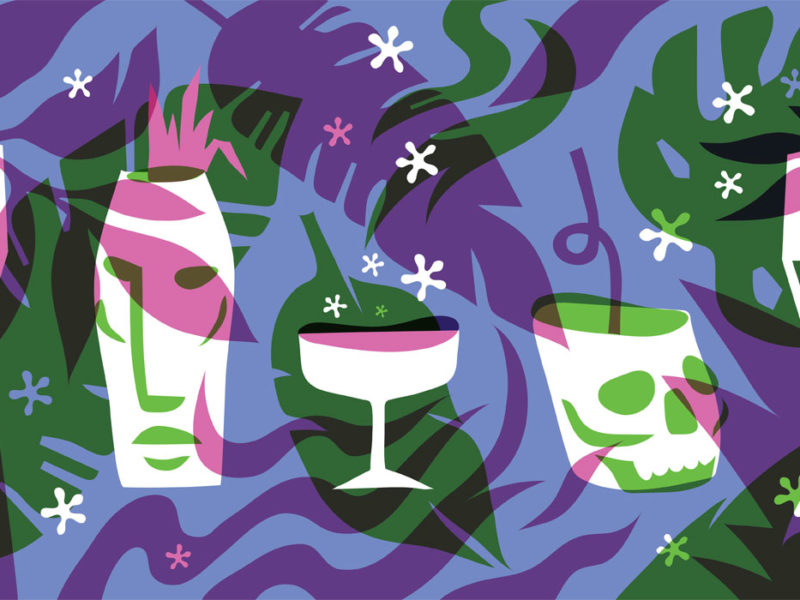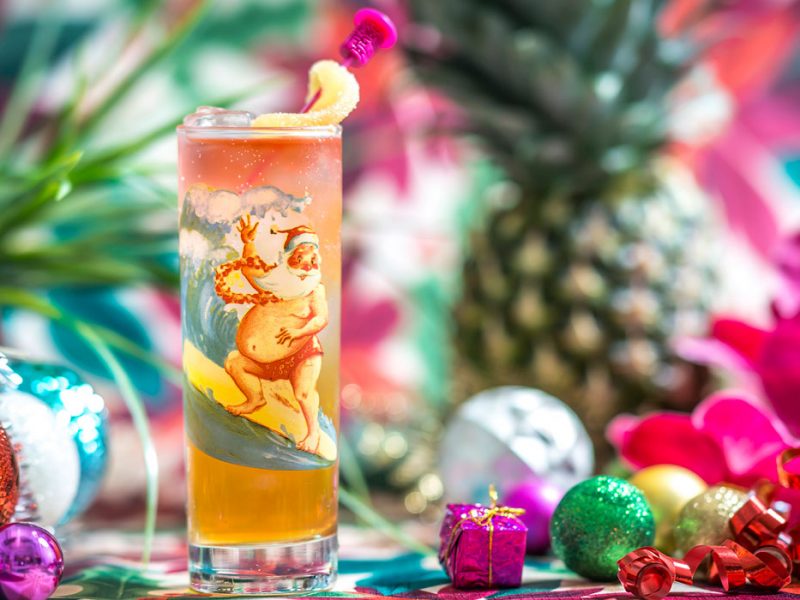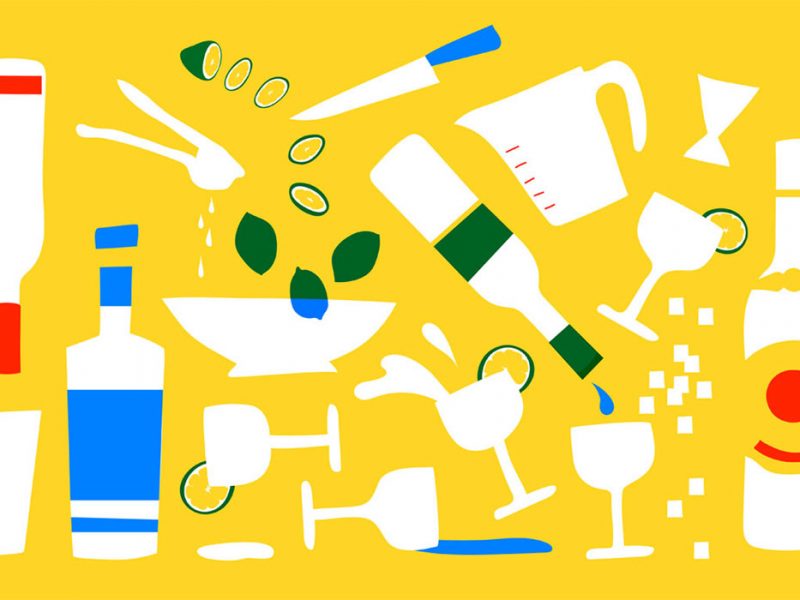On May 14, 2018, the Rum Reader convened a crucial cocktail council. A select panel of New York-based bartenders and drinks historians gathered at famed cathedral to the cocktail, Death & Company, for a rare chance to freely discuss that foundational rum drink, the Daiquiri.
The discussion is presented in two parts, of which this is the second. Read Part 1 here.
Troy Sidle is a man driven by all things Daiquiri. Training under Toby Maloney at Chicago’s Violet Hour some years ago, he learned of its centrality to the bartender’s art. The Rum Reader invited him to assemble a dream team of Daiquiri experts to explore its particular role in the current cocktail revival. Our panel consisted of:
Krista Archer, the New York brand manager for Spiribam, the prominent producer of rhum agricole and other Caribbean elixirs.
Matthew Belanger, the head bartender at Death & Company, who also served stints at Donna and Pouring Ribbons.
Alicia Blegen, the general manager of the acclaimed restaurant Lilia and, in a former life, a Daiquiri-slinger at Owney’s Rum’s in-house bar.
Kate Perry, La Maison & Velier’s United States market manager and former general manager of Seattle’s Rumba, often considered the finest rum bar in the country.
Joaquín Simó, bartender and owner at Pouring Ribbons, formerly also of Death & Company, and one of the most knowledgeable and respected bartenders of his generation.
Karl Franz Williams, a serial bar entrepreneur whose projects include Solomon & Kuff’s Rum Hall, known for its rum-forward, pan-Caribbean menu.
David Wondrich, the world’s foremost authority on booze and its history.
Troy served as moderator of the discussion. The panel was ably hosted by the Death & Company team of Shannon Tebay and Sam Johnson, who shook up a few Daiquiris to keep us going.
And now, the thrilling conclusion of our New York discussion.
This transcript has been edited for length and clarity. — Ed.
Influences and Influencers
Troy: Joaquín, what influence did Death & Company have on your Daiquiri?
Joaquín: Oh, god. Huge. To be fair, growing up in Miami, especially in the ’90s when I was a teenager, the Mojito was definitely much more of a thing. Everyone was making Mojitos, so you were drinking a lot more of those than you were Daiquiris. When I came to D. and C., I had been running a South American restaurant, so we’d definitely done a fair amount of them, we had a pretty good rum selection, and I definitely stepped my Daiquiri game up. It was like a 250-seat restaurant and I was making a fresh sour mix and stuff like that, so there were definitely some things you had to do for expediency. It was 2005, around there.
When I got to D. and C., there was an incredible rigor and this mind-blowing variety. Stuff that I thought I knew, like, I totally know sweet vermouth, that’s the red stuff. And there’s nine different bottles of it behind this bar. I have so much to learn, right? So, at least I was on comfortable ground with the Daiquiri. I thought I had a good grasp on it, but then the first Daiquiri we had on the menu was the Jovencourt Daiquiri, which was two ounces of Barbancourt white, three quarter one to one simple, three quarter of lime and a quarter ounce of Los Amantes joven mezcal thrown into it. This very sharp, sugarcane, bright, grassy, pungent, limey thing with mineral smoke on the finish of it. It was really, really fascinating. For me, it was the first time that I looked at a Daiquiri as being this tremendous vehicle.
In the early days of D. and C. you could swap out Bénédictine for yellow Chartreuse and be seen as a savant of drinking. The standards were a little low. “You have Peychaud’s in that? That’s brilliant.” There was just less stuff already created. You had more room to Mr. Potato Head. But the way we would studiously analyze that. I mean, a lot of that came out of so many of the bartenders coming from the Audrey [Saunders] school, which had come from the Dale [DeGroff] school, which was so hyperfocused.
Daiquiri by Joaquín Simó
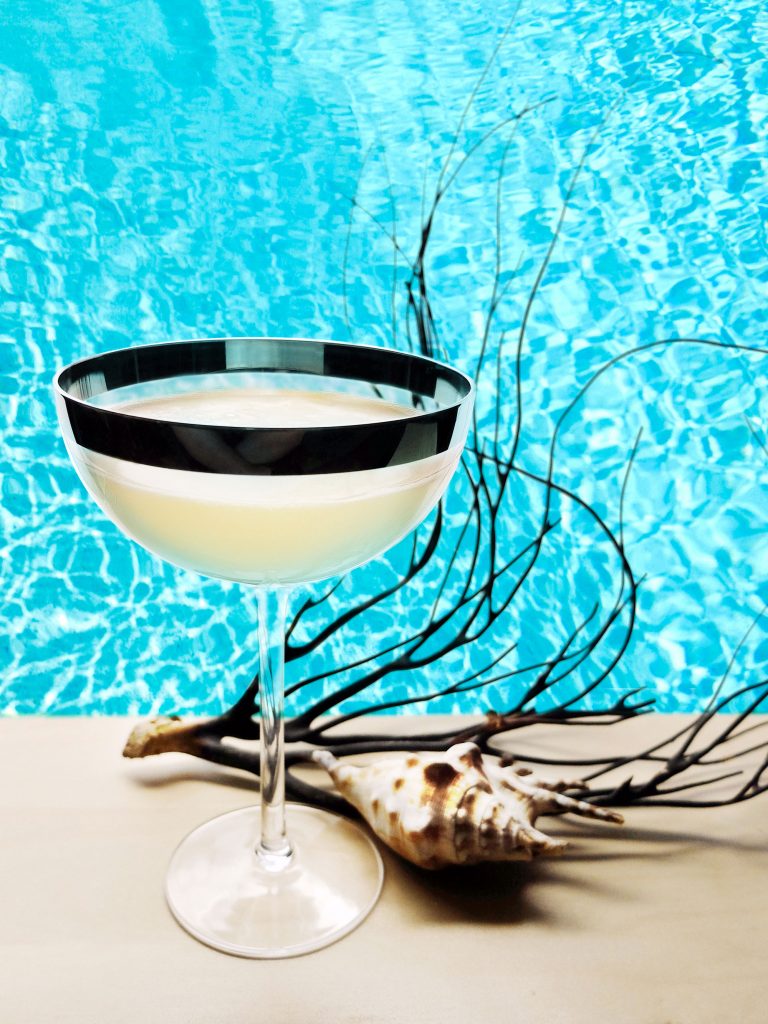
My ideal Daiquiri would be on a beach in Bali, after a long afternoon of scuba diving. My wife and I would wash the salt off, and I would combine 3/4 ounce each El Dorado 15 Year and Rhum JM VSOP, along with a healthy 1/2 ounce of Barrell Jamaican Rum Batch 1 (at a very reasonable 134 proof) with 2/3 ounce rich cane syrup and 1 ounce fresh lime juice. I would shake it until my hands feel glued to the tins, then immediately strain them into those impossibly high-stemmed glasses with the deco striping they use at the American Bar at the Savoy. No garnish needed; the view of the ocean from our room is enough. We savor the complex fruitiness, bask in the confectionary notes, and are reawakened by the bright acid, but not for too long. This is a Daiquiri, after all, and not meant to be lingered over. Five minutes later, we are off in search of spicy noodles, and nothing is wrong with the world.
Troy: I worked at the Violet Hour, which was Toby Maloney’s, who was one of the opening bartenders of the Pegu Club. I asked him, “Where did your balance, the core of so many drinks at the Violet Hour, where does that come from? Is that something you created?” I don’t want to speak for him, but essentially the spec was two, three quarter, three quarter. He said, “Well, let’s see. I think that came from Audrey. Well, maybe not. I don’t know. No, couldn’t have been Audrey. I think it was Sasha.” So, you know, years ago, I asked Sasha [Petraske] while I was sitting in Milk and Honey, “Is two, three quarter, three quarter your spec?” And he was like, “Fuck no.” He said, “I would never put three quarters of an ounce of lime juice in a Daiquiri because it’s so much less tart,” he would go all the way up to an ounce. At least I remember him saying that he didn’t treat lime juice like lemon juice. They were not at all the same thing.
Matthew: Some people say, “Two, three quarter, three quarter, that is the way that you should make the Daiquiri.” If you look at the Death & Company book, where there’s eight different Daiquiri recipes, there isn’t a single one of them that is equal parts lime and sugar. It’s always more lime juice, even if the drink is drier, even if the ratio of lime and sugar to spirit is lower.
I wasn’t there for it, but I think the first Speed Rack’s very last round came down to Yael Vengroff and Karin Stanley and their Daiquiri recipes. Audrey reamed out Karin for putting a full ounce of lime juice in the Daiquiri. She said, “What did Sasha have you guys doing? This is disgusting,” It was just in a very Audrey way, you know, “This is gross.”
David: Diplomatic as always.
Troy: What is the importance of a Daiquiri as a bartender training tool?
Karl: I think it’s right up there with an Old Fashioned.
David: Bedrock. But it teaches balance. If you can’t balance a Daiquiri, I mean, there’s nowhere to hide in that drink. It’s got no corners.
Joaquín: When we train Daiquiris, the first thing we do is have them taste yesterday’s lime juice, and then we have them taste today’s, and right off the bat they’re just like, “Oh, God, why is this guy so angry at me?” Why is this thing so aggressively bad—well, that’s yesterday’s juice. Do you see how oxidized that is? Now, we’re going to taste through one to one simple, two to one cane. We’ll taste it through a couple of different white rums. We’re going to go through a couple of proportions of it.
Takes an hour to teach the Daiquiri. And that’s the first drink that we go to. It takes an hour just because we have to understand that, like Wondrich said, there’s no hiding. There’s absolutely no hiding. If your lime juice is a little off. If someone made the simple syrup in the container instead of measuring the thing separately and they try to eyeball it. The number of ways that you can screw up even a simple three-ingredient drink is legion.
When I first tell people that if they’re shaking a Navy strength rum Daiquiri, it’s going to be substantially colder than if they’re shaking with an 80 or 90, they have no idea what I’m talking about. It will get so much colder the higher the proof is, so by the time you’re done shaking that Smith and Cross Daiquiri or something that’s much higher proof than that even, your hands are glued to the tin. You’ve got to teach them, you may not have enough dilution even though your temperature is right. Think about the length of your shake.
Just all of those things that it teaches you about proof of spirit, character of spirit, knowing your modifiers. It becomes this perfect foundational drink because then you know how to balance a Collins down the road, or a Gimlet, or even a Daisy.
Troy: What’s the evolution from that training Daiquiri to your favourite Daiquiri?
Joaquín: I think for the most part we try to train with a classic white rum Daiquiri to start because that’s iconic. Then we get into a longer explanation about how citrus really does taste better in the winter, when it’s in season. So in January, a guest is coming in from a walk from the subway in 15 degrees, may not be thinking, “Hmm, Daiquiri.” But this is a perfect time for them to have a Daiquiri because that lime is at its peak in January and in February. That’s when they should be drinking citrusy drinks. We change up the rums to some that are heavier bodied, longer aged, pot-still, big rums. Maybe we’re mixing up a smoky Guyanese with a funky Jamaican. Throwing in some real spicy Barbadian rum in there. And then I’ll kind of play around with the lime according to what those spirits dictate. I love teaching people that their January Daiquiri should be totally different than their July Daiquiri.
Kate: Is it you who trains with salad dressing?
Joaquín: No, but I should.
Kate: I can’t remember who it was but somebody told me that they train new bartenders by making salad dressing for three days. Because it’s understanding balance, understanding mixing.
Joaquín: That’s a really good way to explain it.
Kate: And it’s cheaper than using spirits.
Joaquín: I mean depending on the rum, not much. I’ve certainly paid more for olive oil than some rums, so, debatable.
David: The Daiquiri is the test bed for any rum. That used to be rum punch but you’ve got to make that by the bowl. The Daiquiri, especially when you get into the older, simpler variants, it’s really elemental. It’s made with just three ingredients, and you can put any rum in there and you’ll taste the rum if the rum has any flavor at all, or you’ll taste that it doesn’t have any flavor at all. It’s this great step one with evaluating a rum. Well, step one, taste the rum. Step two, make a Daiquiri. See what happens. Step three, make another one.
Daiquiri by Krista Archer
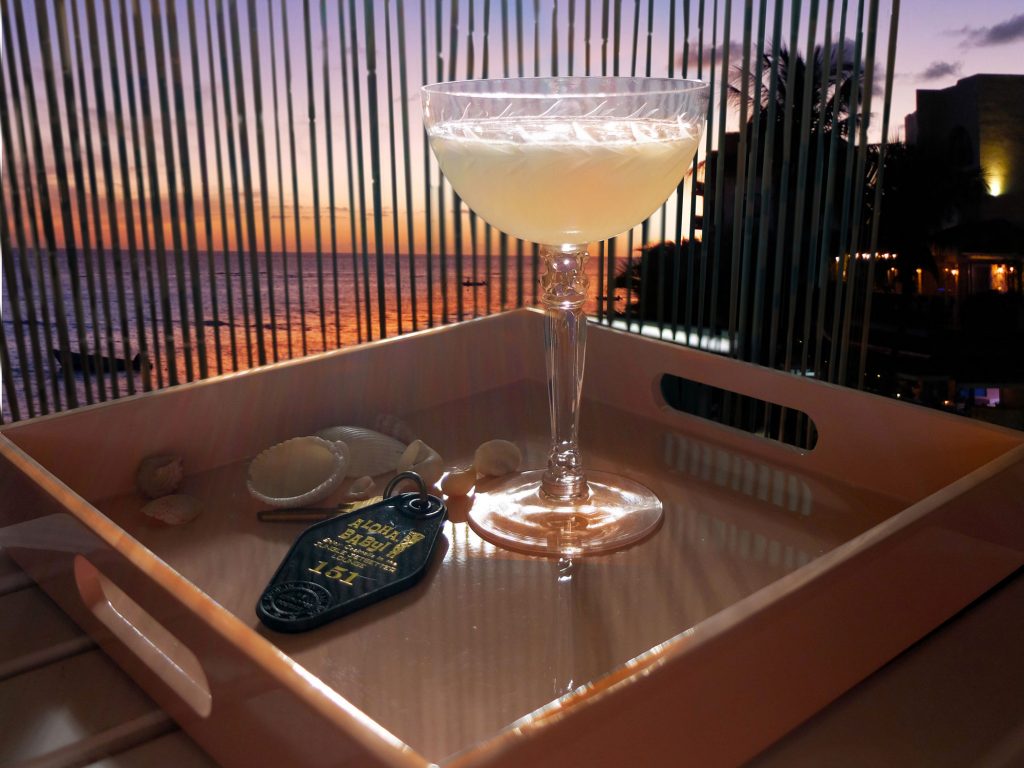
I am a slow drinker, so I do like glassware with a stem for spirit-forward cocktails so they don’t get too warm too fast. Love a Nick and Nora glass or a delicate, etched, vintage coupe find. Late afternoon/pre-sunset in and outdoor setting above 70 degrees—warm and sunny! 2 ounces of a lightly barrel aged agricole rhum (1-3 years) at 100 proof with 3/4 ounce fresh lime juice, and 3/4 ounce sirop de canne.
How Tart Is Too Tart?
Matthew: If you look at the recipe, the historical recipe, it’s obviously more tart. It should be denser because you’re not even using a syrup. You’re blending this sugar into the lime juice and you’re making a cordial à la minute, so it’s less additional water.
Karl: I sort of have this debate in my mind whether or not the tart pushback, whether it was a pushback or whether it was purely historical. You can argue that a lot of drinks in the ’80s and ’90s were overly sweet, just terrible. Spirit and soda kind of mixes. And then this craft industry pops up and we’re not that, we don’t want to even be that. Our drinks can’t even taste close, so having even more than a hint of sweetness was almost a scary thing. We can’t even be remotely sweet. I owned a restaurant on the side at the time, back in 2007, but I didn’t know anything about bartending and crafting. But I started trying some of these recipes, and I thought they were just so tart compared to what I expected. How do we sell this? How do we talk about this? When made cocktails with friends, they were like, “Dude, this tastes like lemonade. Not even lemonade. It’s way too citrus, I can’t quaff this. Like, it’s one and I’m done.”
Krista: Heartburn, yeah. I didn’t know what heartburn was until I started working in this business. Reach for the Zantac.
Kate: I’ve never gotten heartburn drinking Daiquiris until I moved to New York. I used to drink them all day long.
Matthew: Is everybody making them that much more acidic?
Kate: I think the ratios are higher than everything I’m used to. Too limey and too sweet. The three quarter, three quarter or the ounce, three quarter is just too much other stuff in there for me. Limesicles.
In the U.S., you get one kind of lime, the Persian lime, that’s it. In the rest of world and a lot of places in the Caribbean, the limes taste different, the limes that they’re using in late 1800s in Cuba was not the Persian lime that we have in the U.S. today. It was a lime with probably a lot more flavor, the ancestral lime varieties I’ve had the opportunity to taste in the Caribbean taste different than our lime. They’re floral, they’re bright, they have a lot more depth to them.
Does History Matter?
Troy: As we propagate these drinks in the cocktail world, how important is it to go back to try to discover what it was originally?
David: For me, the importance of the history is if it’s important to you, it’s important. If you like the story, it’s important. Most people like a story with their drink. They like to know where it came from. It helps you kind of determine your relationship to the drink and stuff like that, but a lot of people don’t give a shit and they’re perfectly entitled to not give a shit. They don’t have to know. It’s not super important. It’s not going to affect how they vote, you know? Nothing will, unfortunately.
I start to get angry when I see people just making it up or cherry-picking. That’s the part I like, but they’ve just said some bullshit. If you’re going to bring it in, you have to at least do your best to try to understand it accurately or at least as fits the evidence. Not as whatever you want it to be. That’s the problem. That’s where history gets complicated.
Joaquín: But history is also illuminating because it teaches you all the different directions that it took along the way. It’s startling how many young bartenders are thrilled to show off their latest invention to you—the Strawberry Daiquiri. I know you add a little vanilla syrup to yours, but it’s still been done before.
Kate: No joke, that happened to me three days ago.
Joaquín: Yeah, literally happens all the damn time.
David: The first Cuban recipe for the Daiquiri, from 1915, had sugar, grenadine, and Curaçao in it. So, you know, what the hell? Why not? Right?
Joaquín: If you start looking at those evolutions, you look at the Daiquiri one through four, and then you throw the La Florida cocktail which has sweet vermouth and grenadine and Curaçao in it but which is still regarded as a Daiquiri variation. That’s a very broad category all of a sudden. If you start looking at a variety of citrus, a variety of modifiers—really, it was the setting and the style of rum that were the only constants within all those.
If we say we’re going to look at the history because it’ll give us rigor, I think the argument’s the other way around. You look at history to see the variety, and you look at what people have seen as a Daiquiri has changed according to what decade they were in, what city they were in. I guarantee you what we’re drinking in New York over the last decade probably bears very little relation to what they were drinking in mid-century Havana and yet, we’re still celebrating the Daiquiri.
Karl: It gives you a great starting point, because the structure’s there already. There’s all these different things that people have done that have worked already. If you understand that, then building on that, get into substituting or amplifying or dimension, but you at least have something to work with. I think as a new bartender breaking in, having that basis means that a lot of what you’re going to put out is not guesswork. Here’s a formula, here’s an idea. Your selling point for that is not just, “I’m Karl Franz, so this is how you should do it.” It’s, “There was this story back that goes way back. There’s real roots here. There was lore and fun and it works, it’s been working for 120 years. So, start there and then tweak, tune, make it your own.”
Krista: I got this from Kiowa Bryan at my company—we tend to put a dash of fino sherry in our Daiquiris and call them the “No Scruples Daiquiri.” With a little bit of fino sherry, I think it’s kind of like the Chartreuse idea in that it’s giving it another element, but if you can taste the sherry, you’ve added too much. It should act like salt almost, like it’s just enhancing that whole situation by adding a smaller element.
Kate: The Daiquiri is a thing of beauty when executed well. And it’s also been thrown under the bus and run over several times—take a walk down Bourbon Street. The thing I love about the Daiquiri is also the thing that I love about rum: there is no right answer. In the hands of Constantino [Ribalaigua Vert, famed Havana bartender], Daiquiris were served shaken, on crushed ice, or frappé. Drink what you like, how you like it. Whether it’s shaken or frozen, cocktails should be fun.
It’s important to note that “Cuban style” rum does not make for a more authentic experience of a Daiquiri. With three ingredients, the drink is a sum of its parts. I think it’s important to use rum with flavor, be it a funky Jamaican, a grassy agricole, a rounded Barbadian—whatever floats your boat. Don’t obsess over “authentic Cuban rum” for an “authentic Cuban Daiquiri.” Obsess over using quality ingredients to make a great drink.
Troy: What freedom and responsibility does the cocktail industry have to improve classic cocktails?
Matthew: I don’t know if you can. I think your responsibility is, like Mr. Wondrich was saying, to the history and to represent it authentically. If you’re going to represent it at all, to give a shit about representing it accurately.
I guess the question is, what’s the difference between the history of the drink and how it was made, and its relationship with the contemporary palate and all of the different ideas about how we might make it?
I think that’s your responsibility, to understand why you’ve made a decision that’s different than whatever the existing recipe is. Whether it’s for expediency of service or the palate of your establishment. But if it’s arbitrary, I guess that’s when you’ve failed.
Where Should a Daiquiri Be Enjoyed?
Troy: Where is your ideal setting for a Daiquiri? Does the Daiquiri taste better in Cuba?
Joaquín: It tastes pretty damn good. To be fair, I broke a streak of not drinking for a month by having a Daiquiri in Cuba, so I think that no matter what I would have had at that point, it would have tasted like just manna from heaven. The fact that it was a Daiquiri in Cuba did not hurt, but, yeah, it tasted really good.
David: The best one I ever had was made at Constante’s [also known as Costantino, as above] grave and after we poured ours, we left one for him. The workmen who were working nearby, the minute we left—so, somebody drank it. That was a very good Daiquiri.
Karl: In Saint Vincent, there’s a volcano called Mount Soufrière, and what’s great about it is the tropical vegetation and the life around this volcano. Any herb or fruit or anything that comes from that region is so rich. They have the best marijuana in the Caribbean, I guarantee that. That’s just an example.
But the volcano’s a climb, and you’re actually going through these areas that are really, really, really rough, and you may have to hire a local guide; some dread to take you up. Even then, it’s a long climb when you get up there, so you’re a little tired. You’re hot from the climb but this refreshing air is all blowing, you’re looking down into the volcano. That moment of accomplishment with a cigar, which might have a little warmth from it, and then just a refreshing drink. I haven’t tried this yet, but—
Daiquiri by Karl Franz Williams
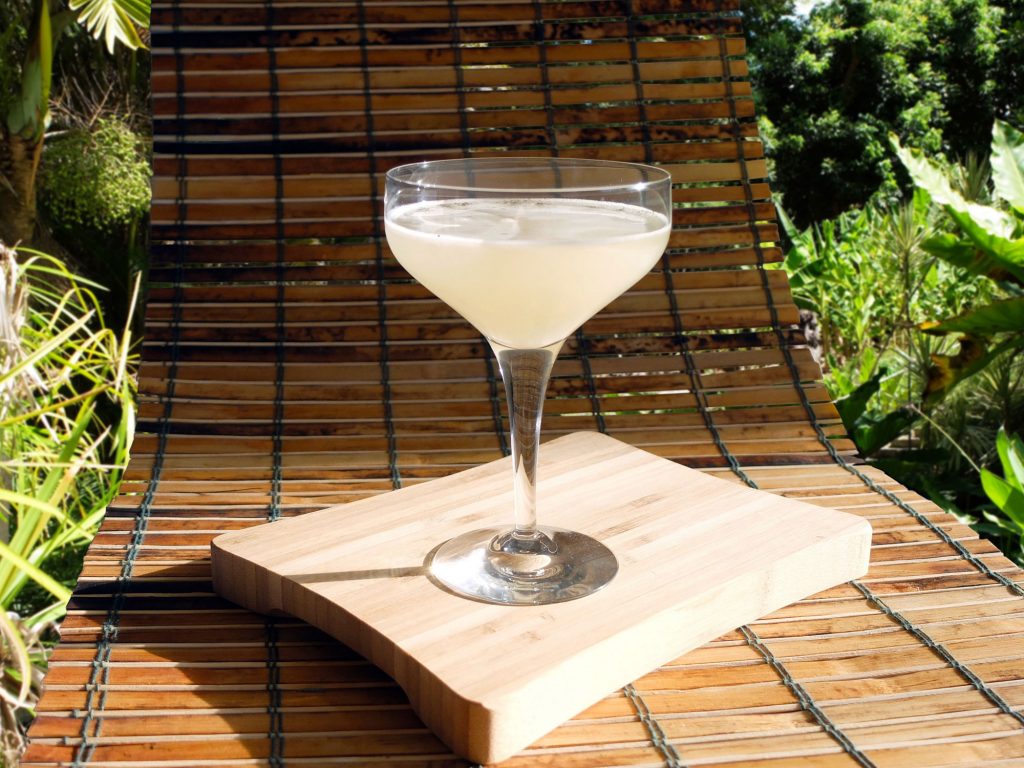
My favorite Daiquiri is made as follows: Now I know this is hard to do, since this rum is so incredible, but if you allow me to dream, I’m drinking 2 ounces Captain Bligh, 3/4 ounce lime, 3/4 ounce simple, 1/2 ounce Green Chartreuse. I’m sitting on the peak of Mount Soufrière in my family’s country, Saint Vincent. And I’m celebrating my climb with my Daiquiri and a cigar.
Thingness
Troy: What is the difference between the Daiquiri and the rum sour?
Joaquín: I think the Daiquiri is The Rum Sour. It’s a kind of ur-cocktail for expressing rum and its nature, because so much of what goes into it grows alongside of it, and because they’ve been consumed together for so long. Whatever a given culture’s take on rum, lime and, sugar—like the Caipirinha is so beloved in Brazil, Arrack Punch is so popular in Southeast Asia—these things become very emblematic of what that is. I think in this part of the world, the Daiquiri is just the rum sour.
Kate: If you are in Martinique or Guadeloupe, you’re drinking Ti’ Punch, which is a deconstructed Daiquiri. If you’re in Brazil, you’re drinking Caipirinhas.
Troy: How much alteration to a Daiquiri means it’s no longer a Daiquiri? For example, is a Mojito a Daiquiri?
Alicia: I love and hate this question for a couple of reasons. One is that I am a super nerd for things outside of cocktails. So, you get into attribution and I have a theory brain, so I go to Roland Barthes and Walter Benjamin and I think about copies and simulations. On the one hand, I’d say like I feel like it’s on the same side of the family tree, right? In terms of, it depends on how far away you get from it. If I’m looking at a close-up view, then I would say then the Mojito is a different branch on the tree. You’re adding a modifier that changes everything. At the same time, if I’m looking at it from far enough away, I’d say it’s the same, it’s the same family.
Kate: When does a thing become something else entirely? For me, a Daiquiri is a three ingredient cocktail: rum, lime, sweetener. A Daiquiri is a rum sour. Modify any of these three ingredients and, sure, it’s still a Daiquiri. Add liqueur and it’s a Daisy. Add bubbles and it’s a Collins. These are the classic cocktail guidelines. Call it what you want. That’s enough for me.
David: I think a drink becomes a classic because it earns its name. It’s not about what’s in the glass. Like, the Rum Ramsey, which has come down to us as basically a Daiquiri with Peychaud’s bitters and a teaspoon full of bourbon in it. It’s not a Daiquiri. I mean, it is a Daiquiri, mixologically, but in terms of teleology and being a thing. In terms of thingness, for me, that’s a Rum Ramsey. It earned its independence. And that comes to under stories more than anything else. Tha commemorates something that people did, and that, to me, is the best part. That’s why I like cocktails. Like the seven fucking bachelors up there who are bored out of their skulls at night, and hot, and they got a chunk of ice, and they’re like, “Wow, cocktail time. Let’s get out the shaker. Let’s use this crazy Cuban rum.” That took on a life of its own. But before that, it was a rum sour. That’s what they first called it until somebody said, “you got to give it a name.” It is a rum sour, but it was their rum sour.
Daiquiri by Troy Sidle
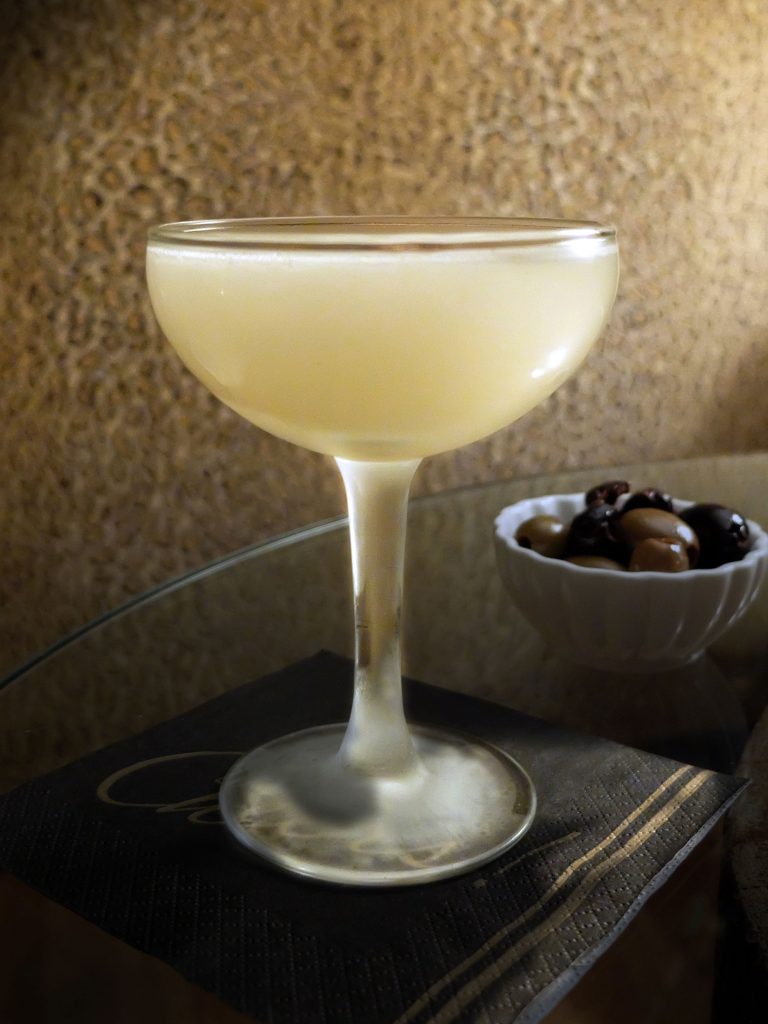
I’m no purist when it comes to a cocktail recipe. I use history as a guide, but always make the best drink possible. While any rum can be made into a Daiquiri, the ideal one would be:
Cuban Havana Club 3 Yr 50 ml
Lime Juice* 20 ml
Simple Syrup** 20 ml
New York City Tap Water 50 ml
Add ingredients and chill with liquid nitrogen just before ice crystals start to form. Shake or hit with an immersion blender to form a head. Pour into a 5.5 ounce Libbey coupe glass (the thicker glass helps keep the drink chilled longer). Do not garnish.
* Juiced with a reamer, strained, and aged for four hours
** Domino brand pure cane sugar, and New York City tap, one to one by weight
Illegal rum, liquid nitrogen, and aged lime juice aside, my favorite Daiquiri is one served on a hot, muggy New York summer day, having just walked into an air-conditioned bar, where it’s clear the Daiquiri will not be the last drink of the night.
THE END. FOR NOW.

